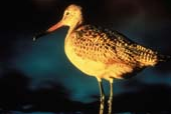3rd Grade–Wetlands

Download the Wetlands Teacher Guide Now
Third Grade curriculum is focused on Wetlands. It includes themes of organism diversity, habitat edges, and animal adaptations. Download a possible instructional sequence, Thematic Instructional Sequence. (78.1KB, PDF)
Curriculum Overview

Coastal wetlands—bays, estuaries, salt marshes, and lagoons—are special places where freshwater meets the salty ocean. There are many different ways to think of wetlands, as ocean nurseries, storm sponges, water filters, and rest stops for birds, but it’s also true that wetlands are sensitive and rapidly vanishing coastal ecosystems.
The brief descriptions below will provide a sense of the Wetlands activities.
Activity 1: Build a Wetland Estuary (3 Sessions)

Students take field notes during a virtual field trip and then transform the classroom into a wetland estuary as pairs of students make 3-dimensional organisms based on a Wetland Information Card they are assigned.
Activity 2: Estuary Life (3 Sessions)
Students learn about wetlands and estuaries as they listen and delve into the lyrics of the song “Estuary Life” by the Banana Slug String Band. They participate in a jigsaw activity using Estuary Life Content Cards containing additional information about the lyrics, relating especially to new vocabulary or content. Students then participate as contestants in a Game Show to check for understanding.
Activity 3: Oyster Beds (3 Sessions)
This activity uses a content rich approach to increasing literacy skills. Students in small groups make observations about oyster shells and communicate their observations to other students with words or drawings. The activity concludes with students writing collaborative and individual poetry using the word walls filled with new and descriptive vocabulary gleaned throughout the entire activity.
Activity 4: Clams Inside and Out (4 Sessions)
Students learn about the structure, biology, and natural history of clams by coloring, cutting out, and constructing a 6-page clam “Bivalve Booklet.” Students then dissect a real clam to find the parts they learned about with their Bivalve Booklet.
Activity 5: Crayfish Investigations (3–5 Sessions)
Students are guided through planning and carrying out an investigation to answer their own questions, in five sessions. Students are first introduced to an Inquiry Journal and focus on making observations, sketching and asking questions about crayfish, and categorizing them as investigable or not. Small groups of students choose their question and plan their investigation.
Activity 6: Salinity Currents (3 Sessions)
Students in small cooperative groups make observations and participate in discussions about two bottles of water—one salty and one fresh. Students then design and carry out an investigation to determine which is which, using only the limited materials given to them on a tray.
Activity 7: Bird Beak Buffet (3 Sessions)
Students role play species of birds with beaks of different shapes and sizes. They gather different food items with their beaks, graph the results and compare their feeding success.

